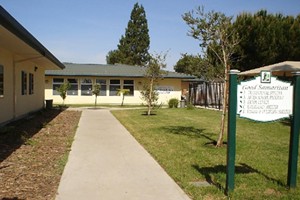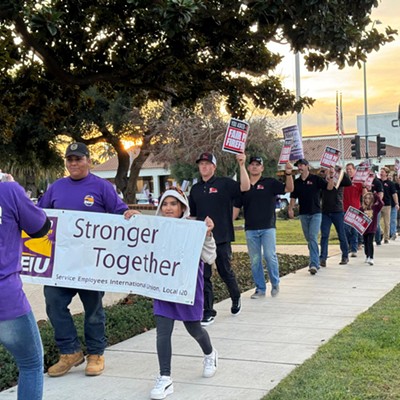After experiencing multiple serious COVID-19 outbreaks and community groups’ continued advocacy for increased Public Health Department involvement, Santa Barbara County H-2A housing and homeless shelters are now regulated through a new health order.

Issued on Sept. 11, the order applies to all individuals entering or residing in homeless shelters and H-2A housing. It requires that residents be screened daily for COVID-19 symptoms; that anyone with symptoms immediately self-isolate and notify the manager, operator, or owner of the facility; and that the manager, operator, or owner immediately contact the Santa Barbara County Public Health Department when there is one confirmed case of COVID-19 within a shelter or housing.
In accordance with California Department of Public Health guidelines, an outbreak is declared at homeless shelters or H-2A housing if there is one confirmed case, plus two or more individuals who are displaying certain COVID-19 symptoms, Deputy Director for Community Health Paige Batson told the Sun in late August.
But the new order requires that local public health officials be notified as soon as there is just one confirmed case at these facilities. This is similar to existing guidelines for skilled nursing facilities, County Public Health Director Dr. Van Do-Reynoso told the Sun.
The order also “strongly recommends” that homeless shelters and H-2A housing facilities “utilize stable groups to reduce potential transmission of COVID-19,” the order stated.
Hazel Davalos—community organizing director at the Central Coast Alliance United for a Sustainable Economy (CAUSE), a group that advocates for increased county involvement in H-2A housing—said the new health order is a big win.
“We’ve been pushing consistently over the last couple months to see this happen, and we’re very excited,” she said. “This is really an urgently needed step to prevent any further farmworker deaths from COVID-19 in Santa Barbara County.”
During an outbreak in Alco Harvesting farmworker housing in Santa Maria earlier this year, 51-year-old Leo Begario Chavez-Alvarado died on July 7 after contracting COVID-19. More than 90 workers total caught the virus during the course of the outbreak.
Claire Wineman, president of the Grower-Shipper Association, said in an emailed statement that the association is “still gathering information on implementation logistics of the order.”
“We continue our ongoing outreach efforts related to COVID prevention and response, including the county’s recent participation in the Housing for the Harvest Program,” Wineman added.
Housing for the Harvest is a state-run program that provides safe, temporary isolation spaces for agricultural workers who test positive or are exposed to the virus. The Central Coast is one of three regions where the program operates, according to a press release from the governor’s office, as these regions have the highest number of agricultural workers.
Davalos said that CAUSE wants to see the county go one step further by establishing a clear line of communication for farmworkers and the community to report if there is noncompliance with the health order.
“With any good policy, we always need to make sure that they’re enforceable,” she said. “We’d like to ask the county to develop a farmworker hotline that’s a standalone phone number where farmworkers can call and report violations to the county, and then public health can act accordingly.”
Do-Reynoso said that the department is assessing its options for people to report violations. Right now, people can call 211, the Emergency Operations Center’s Joint Information Line at (805) 696-1188, or the county’s Environmental Health Services Office, Do-Reynoso said.
“I know that has been requested of us by different groups,” she said of a standalone farmworker hotline. “For right now, I want to tap into existing lines because I want to make sure that whatever line we have is linguistically appropriate, whether it’s our line or in partnership with our community agencies.”
Do-Reynoso added that the Public Health Department will be “in partnership with the operators of the two types of housing to make sure that they have the capacity [to follow the health order], and that there are no barriers to them doing it.”
“So far, what I’m hearing is that this is very doable,” Do-Reynoso added.
She continued that all health officer orders are produced in English and Spanish, and pushed out to the community through partner organizations.
“On our end, I think we really want to figure out how the local community and local farmworkers can chip in and be local watchdogs,” Davalos said. “I really like to think about how we as a community can support the Public Health Department in that enforcement.”














